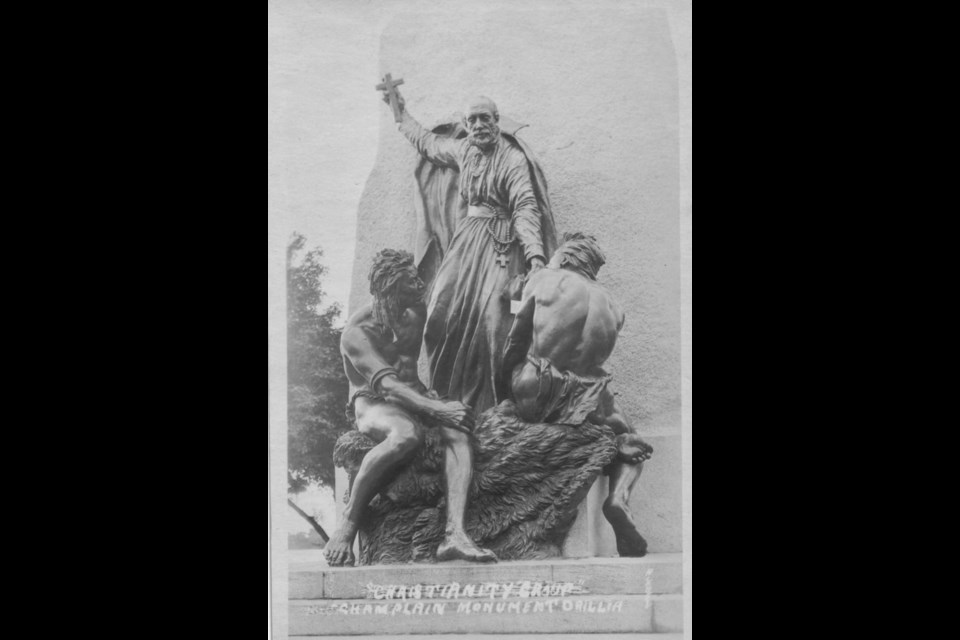OrilliaMatters received the following letter from Kate Grigg on the ongoing controversy related to the future of the Champlain Monument.
********************
Vernon March died at 38 from pneumonia.
More likely it was exhaustion that took him, having poured everything he had into the Champlain Monument and the National War Memorial and the Cape Town Cenotaph and every other work of art he'd created since he first exhibited at the Royal Academy at age 16.
He may have died fretting about the work he still had in him, the things he would never get to express.
Or he may have died at peace knowing he had done his utmost, sculpted the figures he was meant to sculpt, created the monuments he was meant to create.
At least he wouldn't have been troubled by the thought that something he made would one day upset people and become a source of controversy and possibly be shut away in darkness or tampered with or destroyed. He had done his best.
He had made every figure on the Champlain Monument as beautiful as he could. When, having lived through and served in the First World War, March would have known that men, human beings, regardless of colour or race, are all of them flawed. That no one really belongs on a monument and yet despite all the light and shadow they contain, like life itself they are beautiful.
It was history they put in his hands: Champlain coming to Canada and bringing with him a way of life that eventually prevailed. The broad stroke, not the raw, everyday reality from which no one, white or native, emerges unspotted.
The natives (according to the Jesuit records known as the Relations, and other historic research) strong and handsome, thinking white men stupid, inferior both mentally and physically.
The Jesuits appalled by the conditions of native life, the vermin and the unwashed bodies, the half-raw meat on which the natives feasted (with no way to preserve it for later use), the promiscuity, and coarse language (though such language was not intended to offend).
Longing for home, but unable to abandon what they considered their divine duty, willing to stay and interfere with the minds and hearts of another people.
Other white men envious of the native way of life, wanting the same freedom, to live only to fish and hunt and eat and mate. Some white men stripping off their western garb and disappearing into the tribe.
Champlain seeking, needing the help of the First Nations people, wanting their trade and expertise. But not explaining (perhaps deliberately, or not thinking to explain, or not able due to the language barrier), the kind of place he came from, the cities his people built, the changes settlements and commerce and invention would bring.
The natives wanting guns in exchange for their co-operation, guns to use against their enemies, to fight off the Iroquois. A people so fierce they would pour boiling water over the heads of the Jesuits in mockery of baptism while admiring the stoicism those men displayed as they were tortured to death.
It's a miracle something as beautiful as the Champlain Monument exists. It's a wonder Vernon March could make out of it all something so moving to gaze upon.
We should all be grateful, white or native, seated or standing, to be so finely, so benignly, so lovingly portrayed.
Put new plaques in the park explaining the context, the limitations of the monument. Or install a group of totem poles for artistic balance. Or erect a statue of Chief Yellowhead, local native leader.
Or commission a second monument depicting First Nations people towering over the white man. If that will make people happy - although the course of human history would indicate that what makes people happy, what they prefer, is conflict.
But let Vernon March rest in peace. He alone, it could be argued, did something worth celebrating. He alone transcended human nature and left something outstandingly beautiful on this planet.
Kate Grigg
Orillia
********************



